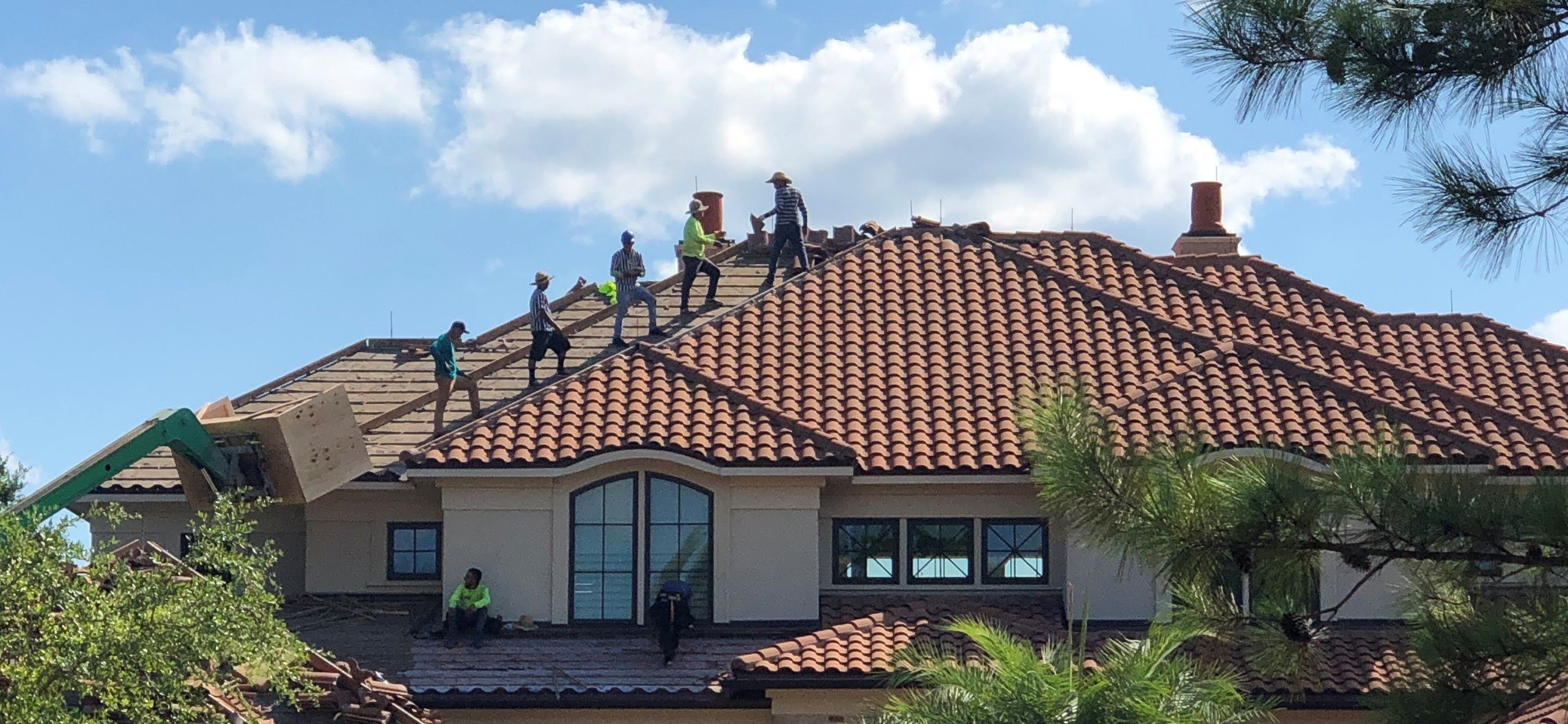Exactly How Gainesville Roofing Companies Can Transform Your Home's Exterior
Exactly How Gainesville Roofing Companies Can Transform Your Home's Exterior
Blog Article
Ideal Practices for Ensuring Correct Roofing Ventilation
A balanced consumption and exhaust vent ratio, generally 1:300, plays an essential role, with consumption vents ideally positioned at the reduced edge of the roofing for awesome air entry and exhaust vents at the optimal for warm air leave. Maintaining insulation away from vents is crucial to protect against airflow constraint.
Understand Air Flow Essentials
Correctly comprehending ventilation fundamentals is necessary for ensuring the durability and effectiveness of roofing systems. Efficient air flow reduces moisture build-up and temperature extremes in the attic, both of which can lead to substantial architectural damages over time. A well-ventilated roof covering helps in preventing typical issues such as mold development, wood rot, and ice dams, which can compromise the integrity of the roof products and the underlying structures.
The primary objective of ventilation is to promote the movement of air, enabling a constant exchange in between the interior and exterior settings. This balance is accomplished with a mix of consumption and exhaust vents that collaborate to preserve optimum air movement. Intake vents, normally situated along the soffits or eaves, allow fresh air to enter the attic room space, while exhaust vents, often situated at or near the roof ridge, enable warm, damp air to run away.
Key aspects affecting the effectiveness of roofing system ventilation include proper placement, ample sizing, and ensuring that both consumption and exhaust vents are unhampered. Routine assessment and upkeep are crucial to identify potential clogs, damage, or inefficiencies in the ventilation system, thereby protecting the roof covering's efficiency and sturdiness.
Kinds Of Roof Covering Vents
Roof covering vents play a crucial role in preserving reliable attic ventilation and, by expansion, the total health of the roof covering system. Numerous sorts of roof covering vents are offered, each with distinct benefits customized to particular roof requirements. Ridge vents, as an example, are mounted along the roof covering's peak, permitting cozy, damp air to escape from the attic room. They offer constant air flow and blend seamlessly with the roofline, making them both reliable and cosmetically pleasing.

Soffit vents are set up under the eaves and operate in tandem with roofing system vents to guarantee a balanced consumption and exhaust system. By permitting cooler air to go into from below, soffit vents facilitate the expulsion of warm air through top vents. Gable vents, located on the outside wall surfaces of the attic, deal another reliable service, especially in homes with saddleback roofs.
Analyze Your Present Air Flow

Following, take into consideration the age and condition of your roofing products and ventilation parts. Older systems might not conform with current building ordinance or might have weakened gradually, decreasing their effectiveness. Conduct a complete assessment to recognize any type of indications of wear and tear, such as rust, damages, or voids that could endanger the system's efficiency.
In addition, gauge the attic room temperature and moisture levels. High temperatures and moisture can indicate poor air flow.
Setup Best Practices
Reliable installation of roof covering air flow systems is vital for ensuring optimal efficiency and durability. Proper setup starts with comprehending the specific air flow requirements of the structure and the roof covering it covers. This entails calculating the right proportion of intake to tire vents, normally adhering to the 1:300 rule, which stipulates one square foot of air flow for check here each 300 square feet of attic floor space.

Consumption vents should be installed at the roofing's lower side, usually in the soffits, to permit amazing air to enter. Exhaust vents, on the various other hand, must be installed near or at the roof covering's peak to help with the departure of warm, wet air.
Seal all vent links meticulously to avoid air leaks and possible water infiltration. Usage top notch materials and adhere to supplier guidelines to make certain resilience and performance. In addition, integrating ridge vents with baffles can dramatically improve airflow efficiency by stopping wind-driven rainfall and snow from going into the attic.
Ultimately, exact installation of roof air flow systems reduces potential issues such as mold development, ice dams, and structural damages, ensuring the roofing system's stability and the building's total wellness.
Normal Maintenance Tips
Consistency in upkeep methods is fundamental to making certain the long-lasting performance of roofing ventilation systems. Routine evaluations are essential, preferably executed biannually-- in the springtime and loss. During these examinations, guarantee that vents are cost-free of particles, nests, and various other blockages that could restrain air flow. Inspect for any kind of indications of wetness build-up or mold, as these can indicate improper air flow or leaks (roofing companies in gainesville florida).
Use a soft content brush or a vacuum cleaner to get rid of dirt and particles from intake and exhaust vents. Be careful not to harm the vent displays or louvers during the procedure.
Proper insulation is equally essential. Ensure that attic room insulation does not obstruct the vents, as this can significantly limit air flow. Rearrange or change it to preserve an effective obstacle. if any type of insulation has shifted or worked out.
Lastly, change any type of damaged or missing parts immediately. Busted vents, fractured shingles, or worn-out blinking can all add to inadequate air flow and ought to be dealt with right away. Routine upkeep makes sure that the roof covering ventilation system works optimally, thus prolonging the life-span of the roof covering itself.
Conclusion
Guaranteeing proper roofing ventilation is critical for maintaining the efficiency and durability of a roof. Adherence to the 1:300 intake and exhaust air vent ratio, paired with the critical positioning of vents, is essential. Routine biannual evaluations, particles cleansing, and ensuring insulation does not block airflow are essential methods. Applying these ideal methods will certainly promote a well-ventilated roof covering system, consequently minimizing prospective concerns connected to moisture buildup and extreme heat, eventually prolonging the roof's life expectancy.
A balanced consumption and exhaust air vent proportion, generally 1:300, plays a critical duty, with intake vents ideally put at the reduced side of the roofing for this post cool air entrance and exhaust vents at the optimal for cozy air departure. Intake vents, commonly located along the soffits or eaves, allow fresh air to go into the attic room room, while exhaust vents, frequently situated at or near the roofing system ridge, enable warm, damp air to get away.
Soffit vents are installed under the eaves and work in tandem with roofing system vents to make certain a well balanced intake and exhaust system. By permitting cooler air to enter from below, soffit vents facilitate the expulsion of warm air via top vents. Adherence to the 1:300 consumption and exhaust air vent ratio, paired with the calculated positioning of vents, is vital.
Report this page